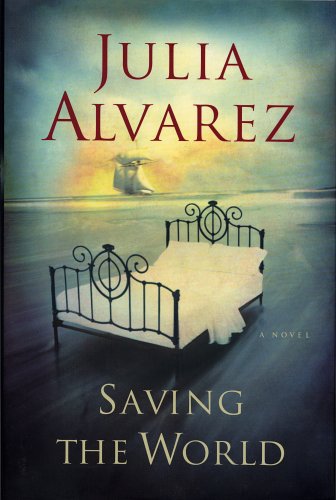Saving the World
This book is composed of several layers, like a torte. In present-day America we have Alma, turning fifty, depressed and lost; we also have Helen, Alma’s elderly neighbour, making her last fight against cancer. Back in 1803 in Spain, we have Doña Isabel Sendales y Gomez, the only survivor in her family after a smallpox epidemic, and the rectoress of an orphanage. How are they connected? By the men in their lives, all of whom are trying to save the world.
Alma’s husband, Richard, works for a large organization that helps the Third World. He gets the chance to have hands-on experience with a project in the Dominican Republic, Alma’s home country. Part of the project is an AIDS clinic. Doña Isabel is asked to help a doctor, Don Francisco Xavier Balmis, director of the King’s Expedition, use her orphan boys to carry the smallpox vaccine to the New World, where an epidemic is raging. Meanwhile, Helen’s son comes home to help her die and sort himself out.
The novel focuses on the decisions the three women make. Alma decides to stay at home, find herself, and finish her research about Doña Isabel and her smallpox carriers, letting Richard go by himself into a situation where he really does need her. Doña Isabel decides that her smallpox-scarred life in Spain will never change and asks to go with her chosen boys to South America. She supports Don Francisco in order to keep the expedition going and save others from smallpox. Helen decides to die at home without further treatment. The results of these decisions make for a story that explores how personal hurt, pain, and anger can be turned into purposeful action, or not, and how saving the world can sometimes mean saving oneself.
Saving the World is written in the present tense and is a slow read, but it’s worth the effort.










